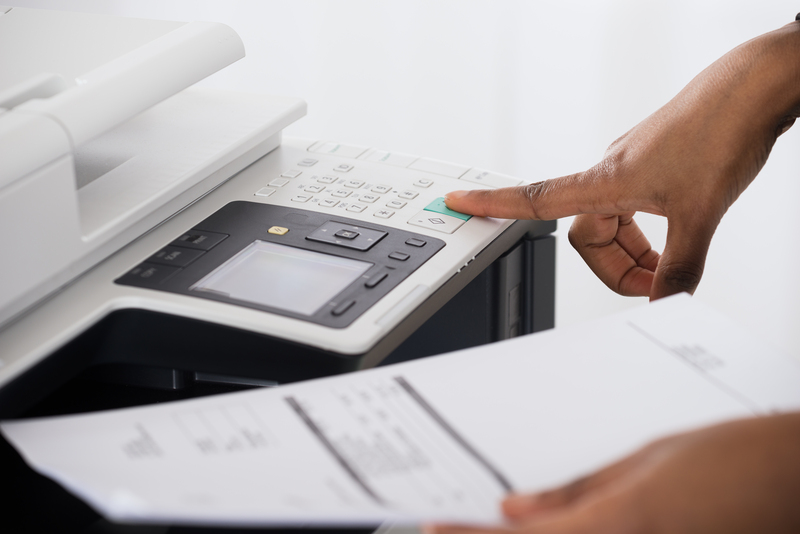Maximize Efficiency with Home Waste Reduction Tips
In an era where sustainability is becoming ever more important, discovering practical ways to maximize efficiency and reduce waste at home can make a significant impact. By adopting mindful habits and strategic approaches, you can not only decrease your household's environmental footprint but also improve your quality of life. This comprehensive article uncovers actionable home waste reduction tips that help you create a more efficient and eco-friendly living space.
Why Focus on Waste Reduction at Home?
Home waste isn't limited to what lands in your garbage can--it includes energy wastage, water misuse, unnecessary packaging, food spoilage, and more. Reducing waste isn't just about being green: it also brings tangible benefits such as lowering utility bills, decluttering, and fostering a healthier environment for your family. By focusing on efficiency and sustainability, you contribute positively to your community and the planet.

Understanding Household Waste: The Different Types
To truly embrace efficient home waste reduction, it's essential to understand the types of waste generated in your household. Here's a breakdown:
- Organic Waste: Food scraps, yard trimmings, and biodegradable materials.
- Recyclable Waste: Paper, cardboard, glass, metals, certain plastics.
- Hazardous Waste: Batteries, electronics, cleaning products, paints.
- General Waste: Items that don't fit into recyclable or compostable categories.
_Being aware of these categories helps you target areas for improvement and innovation in your home waste reduction strategies._
Adopt a Waste Audit for Ultimate Efficiency
Conducting a waste audit might sound complex, but it's simply an evaluation of what your household disposes of during a set period. Documenting the types and quantities of waste helps you identify opportunities for waste minimization and track progress over time.
- Collect: Set aside your waste for a week before taking it out.
- Analyze: Sort items by type--organic, recyclable, e-waste, landfill, etc.
- Identify Patterns: Look for frequently discarded items. Is there excessive packaging, spoiled food, or single-use plastics?
- Action: Target the wasteful patterns with specific reduction techniques outlined below.
Tip: Repeat this audit every few months to monitor improvements and make further changes as needed.
Kitchen Waste Reduction: Transform Your Food Habits
1. Smart Shopping
- Plan your meals: Make a detailed grocery list based on weekly meals to avoid impulse buys and unnecessary purchases.
- Buy in bulk: Choose products with less packaging and buy in larger quantities when practical to minimize plastic or cardboard usage.
2. Store Food Properly
- Organize your refrigerator to keep older items at the front - this helps prevent food from expiring unnoticed.
- Use airtight containers to extend the shelf life of pantry staples and leftovers.
3. Embrace Composting
Composting is a cornerstone of home waste reduction. Turning food scraps into nutrient-rich compost can cut your household garbage output while nourishing your garden.
- Set up a compost bin in your backyard or try a countertop composter for apartments.
- Avoid composting dairy, meat, and oily foods, which can attract pests and complicate the composting process.
4. Reduce Single-use Plastics
The fight against plastic waste starts in your kitchen:
- Switch to reusable alternatives like beeswax wraps instead of clingfilm, and glass storage containers over plastic bags.
- Carry your own shopping bags, and opt for produce bags made from cloth or mesh.
- Purchase bulk products or those with recyclable packaging whenever possible.
Bathroom Efficiency: Cut Down on Water and Packaging Waste
1. Water Conservation
- Install low-flow showerheads and faucets.
- Fix leaking taps immediately - a single drip can waste up to 3,000 gallons of water a year!
- Take shorter showers and turn off the tap while brushing your teeth.
2. Reduce Product Waste
- Choose solid toiletries like shampoo bars, soap bars and conditioners wrapped in biodegradable or minimal packaging.
- Buy in bulk or refill containers from local zero-waste stores for products like hand soap and lotions.
- Switch to bamboo toothbrushes, reusable razors, and cloth towels instead of disposable alternatives.
Streamline Household Recycling for Maximum Efficiency
Recycling is only as effective as your sorting system. To promote successful recycling at home:
- Set up separate bins for plastics, paper, glass, and metals in an easily accessible location.
- Clean and dry items before placing them in recycling to avoid contamination.
- Check your municipality's guidelines for what is and is not recyclable.
- Reduce "wish-cycling"--the act of placing non-recyclables in the bin, hoping they'll be recycled.
Pro Tip: _Label bins clearly to encourage family members and guests to participate in your recycling program._
Declutter and Donate: Transforming Old into Useful
Not everything that no longer serves you needs to head to the landfill. Decluttering with a mindful approach can significantly reduce home waste by giving items a second life.
- Donate gently used clothing, toys, and homeware to local charities or thrift stores.
- Repurpose glass jars, old t-shirts, or containers for storage, cleaning rags or DIY projects.
- Sell valuable items online through platforms like eBay, Facebook Marketplace, or community groups.
Paper Waste Minimization: Go Digital & Get Organized
- Switch to paperless billing and get e-receipts when shopping.
- Use digital note-taking apps instead of sticky notes or notebooks.
- Shred and recycle unwanted mail, and opt out of junk mail lists.
- Save wrapping paper, gift bags, and ribbons for reuse during holidays and celebrations.
Energy Efficiency: Reduce Invisible Waste
1. Upgrade to Energy-Efficient Appliances
Invest in Energy Star-rated appliances which consume less electricity and water. Over time, the energy savings can significantly lower your household's carbon footprint and reduce utility costs.
2. Practice Smart Usage Habits
- Unplug chargers, devices, and appliances when not in use--phantom energy loss can contribute to higher bills and unnecessary energy waste.
- Switch to LED lighting throughout your home for superior energy efficiency and longer lifespan.
- Use programmable thermostats to control heating and cooling based on your schedule.
Eco-Friendly Cleaning: Sustainable Choices for Homecare
- Make your own cleaning solutions using vinegar, baking soda, and essential oils--safer for your family and the planet.
- Buy concentrated cleaning products to reuse spray bottles and reduce single-use plastics.
- Choose cleaning cloths and mop heads made from natural fibers that are washable and reusable.
Gardening and Yard Waste: Compost and Mulch Solutions
- Compost grass clippings, leaves, and yard trimmings along with food scraps to create organic fertilizer for your plants.
- Use a mulching mower to return finely chopped grass to the lawn as natural fertilizer.
- Share surplus produce or plants with neighbors or local food banks to avoid waste.
Engage Family and Housemates: Encourage Lasting Change
Waste reduction works best as a team effort. Involve all household members with clear goals and shared responsibilities:
- Host a family meeting to discuss and set achievable waste reduction targets.
- Assign age-appropriate tasks--kids can help compost, teens can research recycling laws, and everyone can contribute ideas.
- Celebrate milestones and reward collective achievements, making the process rewarding and fun.
Sustainable Shopping: Make Conscious Consumer Choices
- Support local farmers or markets for fresh, unpackaged foods.
- Choose products made from recycled materials and minimal packaging.
- Opt for quality over quantity to extend the life of clothing, electronics, and home goods.
- Research companies and brands committed to environmental responsibility before making purchases.
Creative Upcycling: Turn Waste into Worth
Repurposing items is a fun and innovative approach to home waste reduction:
- Transform glass jars into chic storage containers or flower vases.
- Use old pallets to build garden beds, furniture, or compost bins.
- Get creative with fabric scraps for DIY crafts, quilts, or reusable bags.
Handle Hazardous Waste Responsibly
- Do not dispose of batteries, paint, or electronics in the regular trash - check for local hazardous waste drop-off locations or recycling events.
- Store unused chemicals securely, and donate any unopened supplies to schools, community projects, or neighbors in need.
Track Your Progress for Lasting Efficiency
Use a journal or digital tracker to document your waste reduction milestones--how many bags of trash you've eliminated, water or electricity saved, and successful upcycling projects. Regular tracking:
- Motivates your household to continue improving.
- Identifies new areas to address or habits to tweak.
- Provides data you can share with neighbors to inspire a wider community effort.

The Ripple Effect of Home Waste Minimization
Every intentional step in reducing household waste creates a wider positive impact. Leading by example, you inspire others, help conserve resources, and support the health of our planet for future generations.
Conclusion: Start Maximizing Your Efficiency Today!
Reducing waste at home isn't about perfection--it's about progress. By implementing even a few of the efficiency-boosting, waste-reducing ideas outlined above, you can make a profound difference in your household and beyond. Whether by composting, recycling, upcycling, or mindful purchasing, your actions matter.
Are you ready to maximize your efficiency with effective home waste reduction tips? Start today, share your journey, and build a future that's cleaner, greener, and more efficient--one small change at a time.
- Take action: Implement at least three new strategies from this guide in the next month.
- Share: Discuss your favorite waste reduction successes with friends, family, and neighbors.
- Adapt: Continue learning and tweaking your habits to fit your evolving lifestyle.
Together, we can turn homes across the world into hubs of sustainability and efficiency.